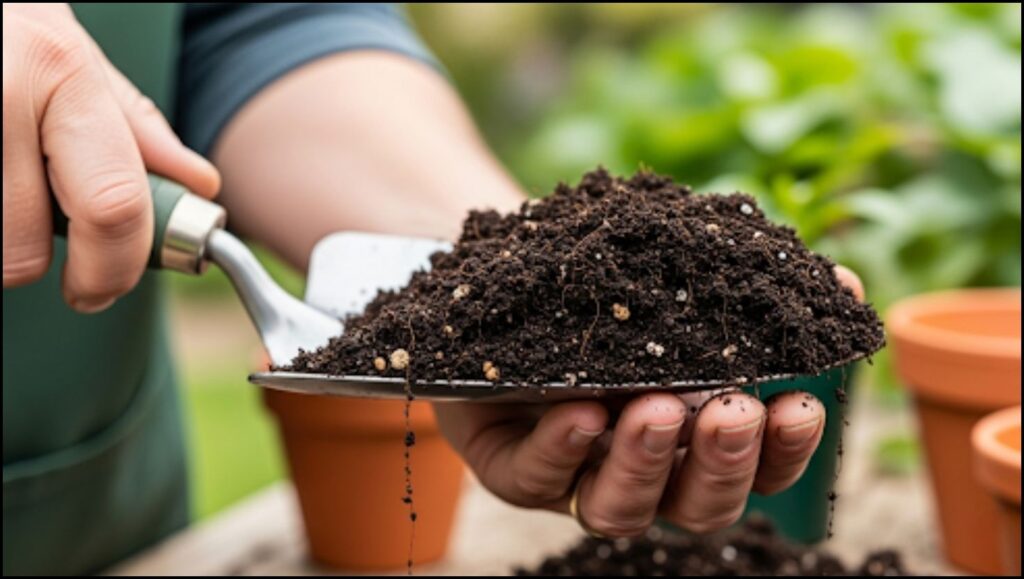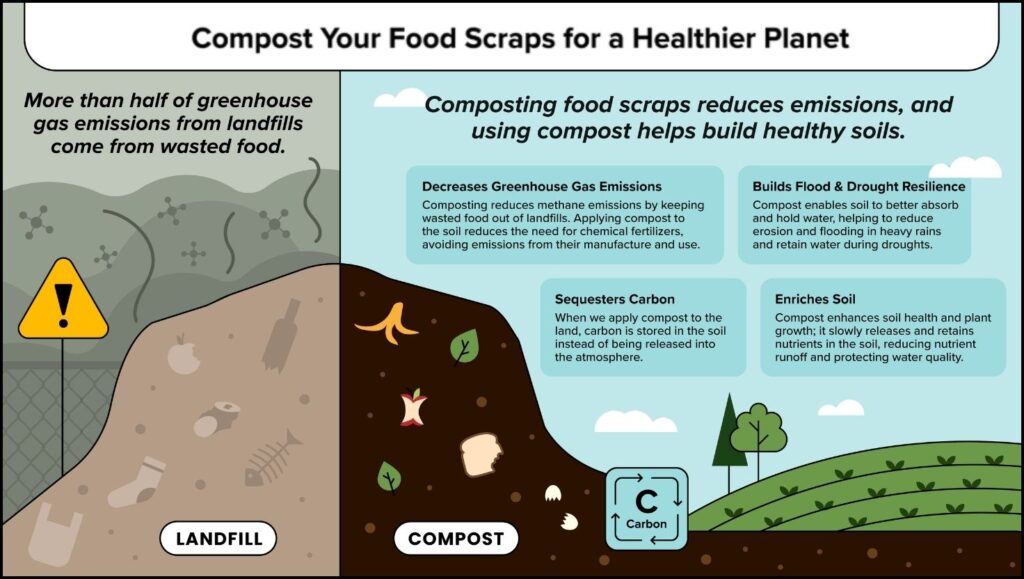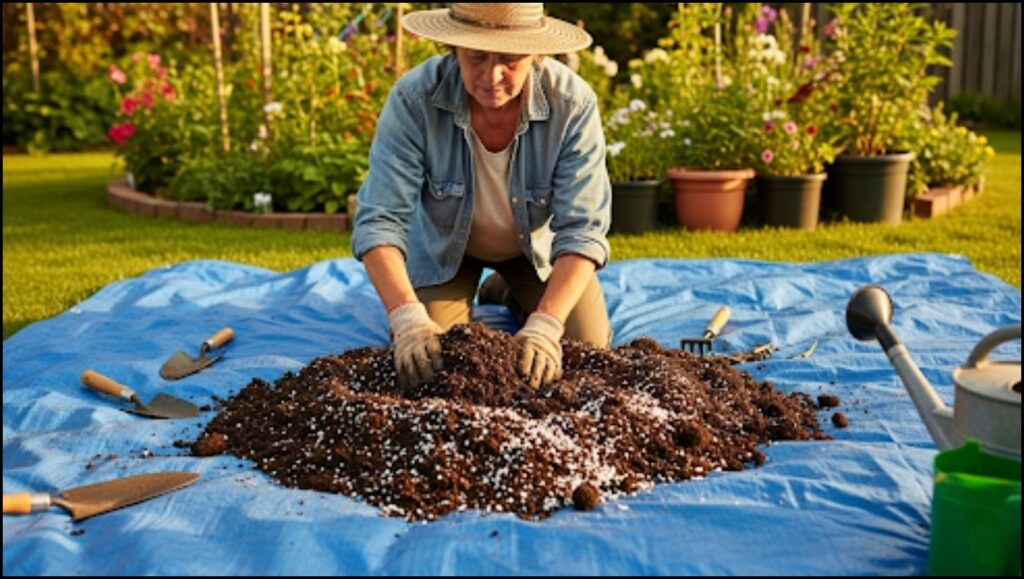At the end of a growing season, gardeners worldwide face a common dilemma: what to do with large bags and pots of used potting mix. While it may seem depleted, horticultural experts confirm there are many sustainable ways to use old potting soil, saving money and reducing waste. These methods range from rejuvenating it for new containers to improving existing garden landscapes.

Key Insights: Repurposing Used Potting Soil
| Method | Best For | Key Consideration |
| Rejuvenation | New container plants | Must add fresh compost and nutrients. |
| Compost Addition | Enhancing compost piles | Acts as a valuable “brown” material. |
| Soil Amendment | Improving garden beds | Increases organic matter and improves soil structure. |
| Sterilization | Preventing disease spread | Critical if previous plants were sick. |
The Sustainable Choice: Why Reusing Potting Soil Matters
Each year, countless bags of used potting soil are discarded, contributing to landfill waste. However, this “spent” medium is a valuable resource. Old potting mix has lost much of its nutrient value and has likely become compacted, but its fundamental structure remains. Reusing it is not only economical but also an environmentally responsible practice.
“The primary issues with used potting media are compaction, a decrease in nutrients, and a potential buildup of salts from fertilizers,” said Dr. Linda Chalker-Scott, an extension urban horticulturist at Washington State University. “With a few simple steps, it can be given a second life.”
The key is to understand what the soil lacks and what risks it may carry. Soil from healthy plants is generally safe for reuse, while soil that housed diseased plants requires sterilization to avoid spreading pathogens.
Preparing Old Potting Mix for a New Purpose
Before you use old potting soil, a quick assessment is necessary. First, dump the soil onto a tarp and break up any large clumps. Remove old roots, weeds, rocks, and other debris. If the previous plants showed any signs of fungal or bacterial disease, such as powdery mildew or root rot, experts recommend sterilizing the soil. According to the University of California Agriculture and Natural Resources (UC ANR), one effective method for gardeners is solarization.
“To solarize soil, moisten it and seal it in a clear plastic bag,” a UC ANR guide states. “Leave it in direct sunlight for four to six weeks during the hottest part of the year.” The heat kills most plant pathogens and weed seeds. For smaller batches, soil can be baked in an oven at 180°F ($82^{\circ}$C) for 30 minutes, though this can create an unpleasant odor.
7 Expert-Backed Ways to Use Old Potting Soil
Once prepared, your old potting soil is ready for a variety of applications in the garden.
1. Rejuvenate It for New Containers
The most common way to reuse old potting mix is to rejuvenate potting soil for new container plants. Because old soil is depleted and compacted, it must be amended. The Oregon State University Extension Service recommends mixing it with fresh materials.
A general rule of thumb is to combine two parts old potting soil with one part fresh compost or new potting mix. To improve drainage and aeration, add a handful of perlite or vermiculite. Finally, mix in a balanced, slow-release fertilizer to restore the nutrient content.
2. Add It to Your Compost Pile
Used potting mix is an excellent addition to a compost bin or pile. It functions as a “brown” or carbon-rich material, balancing nitrogen-rich “green” materials like kitchen scraps and grass clippings.
“Adding old potting soil to compost improves the pile’s structure, introduces beneficial microorganisms, and helps manage moisture levels,” explained a master gardener with the Penn State Extension program. Distribute the soil in thin layers to prevent it from forming dense, unaerated clumps within the compost.

3. Amend Garden Beds and Borders
Old potting soil can serve as a valuable garden soil amendment. When worked into existing garden beds, it can significantly improve soil structure. For heavy clay soils, the organic matter helps loosen the soil, improving drainage and aeration. In sandy soils, it helps retain moisture and nutrients.
Spread a one- to two-inch layer of the old potting mix over the surface of your garden bed and work it into the top six to eight inches of native soil with a fork or tiller.
4. Fill Holes and Level Low Spots
For minor landscaping needs, used potting soil is a simple and effective solution. It can be used to fill in holes in the lawn left by removed plants or burrowing animals. It can also be used to level out low spots in the yard or garden paths before adding topsoil or mulch.
5. Create a Base Layer for New Raised Beds
When filling deep raised beds, purchasing enough soil can be expensive. Old potting soil can be used to fill the bottom third or half of the bed. This practice, sometimes called the “lasagna method,” reduces costs without harming plant growth, as the active root zone for most vegetables and flowers is in the top 8-12 inches.
Top off the bed with a high-quality raised bed mix or a blend of compost and topsoil. The old soil at the bottom will provide bulk and slowly break down over time.
6. Store Tender Bulbs and Tubers
Dry, used potting soil makes an excellent medium for storing overwintering bulbs and tubers like dahlias, cannas, and begonias. After digging up the bulbs in the fall, allow them to cure for a few days. Then, place them in a cardboard box or crate and cover them completely with the dry, sterile potting mix.
The soil insulates the bulbs from temperature fluctuations and prevents them from drying out. Store the box in a cool, dark, and dry place like a garage or basement until it is time to replant in the spring.
7. Use as a Component in DIY Mixes
After being sterilized and sifted, old potting soil can be a component in custom soil blends. For example, you can mix it with sand and compost to create a mix for succulents, or with peat moss and perlite for a new seed-starting mix. Always ensure it’s combined with fresh, nutrient-rich ingredients to support healthy plant growth.

What Not to Do
Experts caution against reusing soil that hosted plants with serious, soil-borne diseases like verticillium wilt or fusarium wilt, even with sterilization, as some pathogens can be persistent. It is also unwise to use unamended old soil for starting seeds or potting up young seedlings, as they require a fine texture and high nutrient availability that spent soil lacks.
Ultimately, by thoughtfully repurposing old potting soil, gardeners can embrace a more sustainable practice that benefits both their wallets and the environment. This approach turns a potential waste product into a valuable asset for future gardening success.
Avoid These 10 Plants at All Costs If You Have Clay Soil—Experts Reveal Why
